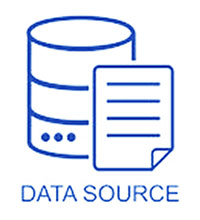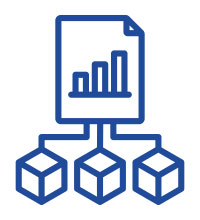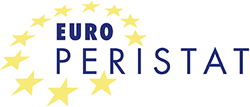This webpage describes the data collected by Euro-Peristat, why these data are collected and how these data are stored and used.

What is Euro-Peristat’s mission?
The Euro-Peristat network works to improve the health of pregnant women and babies by gathering and analysing data from national health statistical systems across European countries. It focuses on:
- Collecting reliable and comparable data
- Euro-Peristat gathers important information about pregnancy and newborn health from national health systems.
- Evaluating policies and practices
- A team of experts analyses this data to provide information that can help governments and health organisations improve care for mothers and babies.
Why is this important?
Currently, many European and international health databases (such as those from Eurostat, OECD, and WHO) have major gaps:
- Missing data: Some key statistics, like the number of premature births or multiple pregnancies, are not collected.
- Inconsistent reporting: Even when data exists, differences in how it is recorded make comparisons difficult.
- Lack of detail: Important breakdowns (e.g., stillbirths by birth weight or caesarean rates by medical history) are missing, making it hard to assess healthcare quality.
Euro-Peristat aims to fill these gaps, ensuring that better data leads to better healthcare for mothers and babies across Europe.
What data does Euro-Peristat use?

Data sources include birth registers, vital statistics and hospital discharge data and differ by country. You can find the data source used for your country and the contact person for the network here.

Data items are the information needed on each pregnant woman and newborn to produce Euro-Peristat indicators. For the core indicators, 16 data items are needed, listed here. Data on individuals are not collected by Euro-Peristat. These data can only be accessed by the contact person each country.
Euro-Peristat collects data in two formats:
- Aggregated data tables by indicator. These tables cannot be linked, meaning the data they contain are distinct. For instance, for stillbirth, we collect data by gestational age and birthweight (give an example). It is not possible to link gestational age to the birthweight using these tables. All of the aggregate tables follow this rule so that individuals cannot be identified by using information from different tables.
- Summary results which are averages, medians, measures of data variation and the coefficients of statistical models. For instance, we collect data on mean birthweight and its standard deviation (variability). These results relate to groups of births and individuals cannot be identified.
How are the data collected?
Data are collected by running the same statistical programs in each country and then sending the results to Inserm using secure data transfer procedures. Before running the statistical programs, each country defines the data items (see above) using the same definitions and formats. This is called creating a common data model and is necessary to make sure that the results can be compared in all the countries. The results are examined by the country team and also by Inserm to make sure that there are no errors in the data. If you are interested in learning more about Euro-Peristat’s data collection procedures, see here.
Where are the data stored and analysed?
The aggregated tables and summary results that are sent to Inserm are stored on a secure server accessible only to members of the team that manages the Euro-Peristat study. Personal data such as names or dates are not collected.
All of the data collected may also be reused for other research projects related to perinatal health in Europe. These data can be transmitted securely by the Euro-Peristat study management team, which does so only when the project proposed by the requesting team has a scientific interest, recognized by the whole research group.
All of the work performed that has led to scientific publications can be consulted here.
Anonymous Data
The data collected in Euro-Peristat are anonymised aggregated data tables or statistical results: therefore they do not fall under General Data Protection Regulation which do not apply to anonymised data (European Parliament, Council of the European Union: Regulation (EU) 2016/679 of the European Parliament and of the Council of 27 April 2016 on the protection of natural persons with regard to the processing of personal data and on the free movement of such data, and repealing Directive 95/46/EC (General Data Protection Regulation).Official Journal of the European Union, 2016).
The aggregate tables are designed to be anonymous: each table has no more than three-way cross-tabulations and tables cannot be linked to other tables to augment the number of data items because included items do not overlap. Further, all sociodemographic characteristics, such as age, parity, socioeconomic status, are exported in grouped categories.
Statistical Disclosure
Aggregate results returned by most of countries are not subject to cell size limits, unless this is required by the institution’s or the country’s regulations. This is necessary to allow accurate compilation of the indicators. When the country apply a statistical disclosure rule, more tables are needed to check the accuracy of the calculation of the indicators.
For the publication of results, details on cell sizes under 5 (or 10, if required by the data institution) are not included in reports, web tables or scientific papers.
